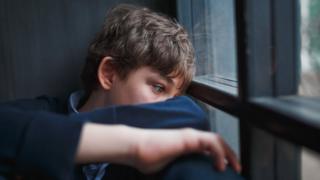
Image copyright
Getty Images
Teenagers who are victims of neglect, bullying, crime, family violence and sexual exploitation are more likely to self-harm and have suicidal thoughts, a study from King’s College London finds.
The report says the picture is complex, with other pre-existing vulnerabilities like low self-esteem or an unsupportive home also playing a part.
But it says schemes to stop adolescents becoming victims may lower the risks.
Suicide and self-harm are major causes of death among young people worldwide.
Figures from the World Health Organization published last year show that globally:
- suicide and accidental death from self-harm led to an estimated 67,000 deaths
- this was the most common cause of adolescent mortality in 2015, after road injuries, respiratory infections and complications in pregnancy
- in Europe and South-East Asia, it is one of the top two causes of adolescent death
- self-harm largely occurs among older adolescents, and globally it is the second leading cause of death for older adolescent girls.
How was the research carried out?
The researchers examined material gathered from a long-term study of 2,232 twins born in England and Wales in 1994-95.
They looked at a wide range of adolescent victimisation – maltreatment, neglect, sexual victimisation, family violence, peer/sibling violence, cyber-victimisation, and crime – through interviews with participants when they were 18 years old.
What did the study find?
The study found that more than one-third of adolescents had experienced at least one type of severe victimisation between the ages of 12 and 18 and 7% had experienced three or more severe types of victimisation.
Almost a fifth (18.9%) had had some form of self-injurious thoughts and behaviours.
- Bullied MP ‘mentally tortured’ as a child
- Teeth-grinding ‘linked to school bullying’
- Childhood bullying anxiety ‘goes away’
The researchers found that teenagers who were victims were much more likely than their non-victimised peers to have these sorts of thoughts.
For each additional victimisation type experienced, the risk of contemplating suicide and of self-harming doubled, and the risk of attempting suicide tripled, they found.
Half of adolescents exposed to three or more types of victimisation had experienced suicidal thoughts and self-harm, and a quarter had attempted suicide.
The study acknowledges that “pre-existing vulnerabilities” are a major factor in these thoughts and behaviours.
But, after making adjustments for family and individual vulnerabilities, victimised teens still showed an increase in suicidal thoughts (though not suicide attempts) and self-harming.
What does the research call for?
The study says preventing adolescents from becoming victims – for example through school-based anti-bullying schemes, family support programmes and community safety initiatives – could help reduce the likelihood of them having suicidal thoughts or self-harming.
But it also concludes that effective interventions to prevent premature death in victimised adolescents should also address pre-existing vulnerabilities.
Lead author Jessie Baldwin from King’s College London told the BBC: “Our findings showed that victimisation in adolescence is an important risk factor for suicidal ideation, self-harm and suicide attempts.
Image copyright
Getty Images
“Therefore, adolescents known to have experienced maltreatment, bullying, cyber-victimisation, and other forms of victimisation should be supported to prevent them from self-harming or taking their own lives.
“Because victimised adolescents’ elevated risk of self-injurious thoughts and behaviours was in part due to their pre-existing vulnerabilities, clinicians treating victimised adolescents should address these vulnerabilities.
“More broadly, professionals working with young people should appreciate that victimised adolescents have a range of vulnerabilities to poor mental health and self-harm.”
The research paper – Adolescent victimisation and self-injury – is published in the Journal of the American Academy of Child and Adolescent Psychiatry.



